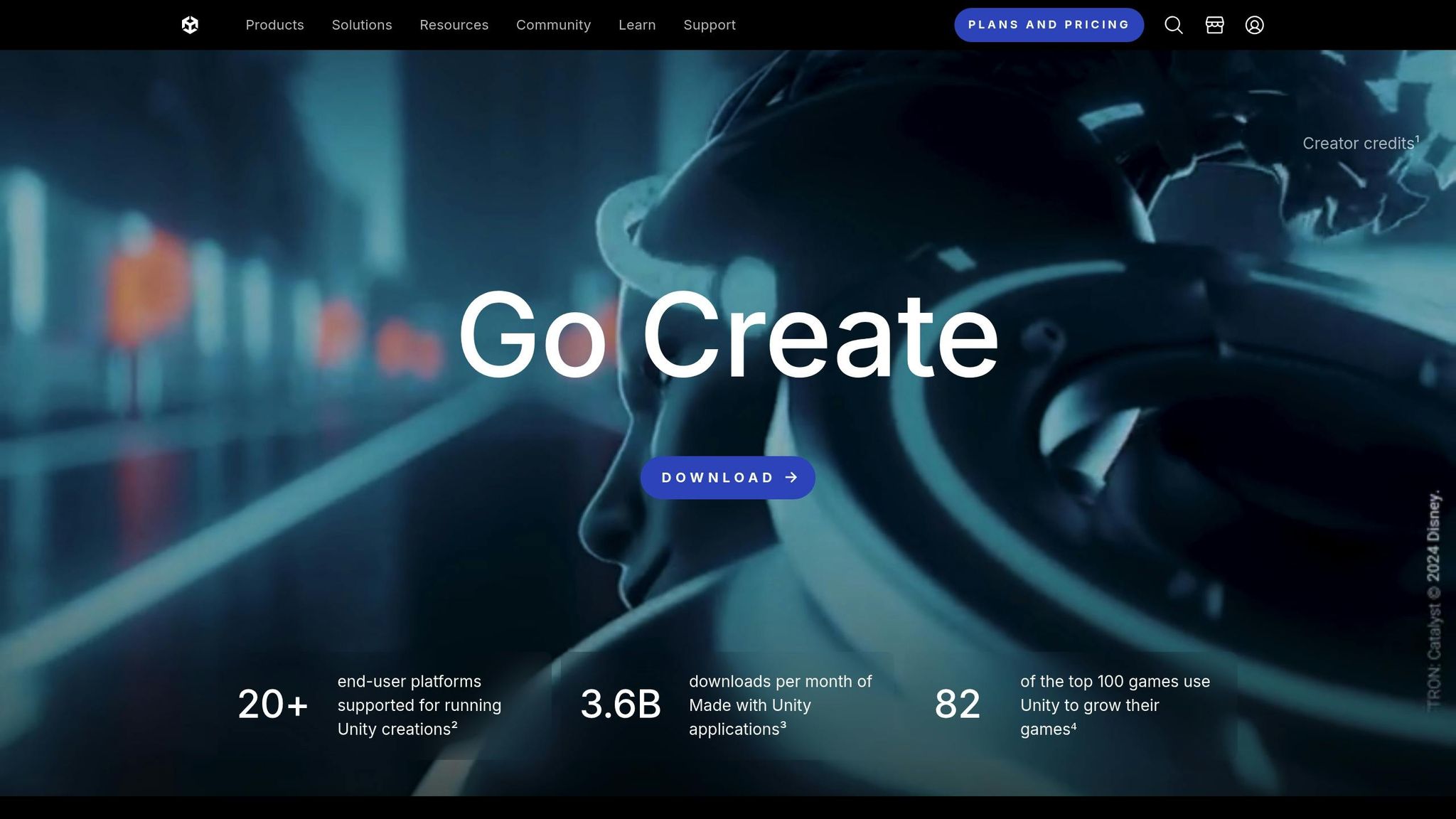Building stateless, scalable cloud-native applications is crucial for businesses to thrive in today's digital landscape. This article outlines 12 key best practices:
- Externalize Application State: Store session data in a stateful backing service like a database to improve scalability and reliability.
- Embrace Stateless Protocols: Use protocols like HTTP and UDP that don't store session data on the server for better scalability and reliability.
- Design for Horizontal Scaling: Add or remove instances to match changing demand, improving scalability and reliability.
- Adopt Immutable Infrastructure: Replace components instead of updating them for simplified deployments and consistency.
- Manage Environment Configuration: Use tools like Docker, Kubernetes, or Ansible to ensure consistent configurations across environments.
- Use Backing Services Effectively: Design backing services to be stateless, loosely coupled, and external to the application.
- Maintain Build, Release, Run Separation: Use CI/CD tools to automate the build and deployment process, ensuring consistency and predictability.
- Implement Concurrency through Process Model: Design your application to handle multiple requests concurrently, improving responsiveness and throughput.
- Ensure Fast Startup and Graceful Shutdown: Implement fast startup and shutdown to maintain high performance and scalability.
- Achieve Dev/Prod Environment Parity: Ensure development, staging, and production environments are similar to reduce errors and inconsistencies.
- Streamline Log Management: Use structured logging, centralize log management, and avoid logging sensitive data for better troubleshooting.
- Isolate Admin and Management Tasks: Separate admin and management tasks from the main application workflow to prevent interference and bottlenecks.
By following these best practices, you can create cloud-native applications that are scalable, maintainable, and reliable.
1. Externalize Application State
When building cloud-native applications, it's crucial to externalize application state to ensure scalability and high performance. Stateful applications, which save client data from one session for use in the next session, can be challenging to scale and maintain. In contrast, stateless applications, which do not store session data on the server, are more suitable for cloud-native environments.
To externalize application state, you can use a stateful backing service, such as a database, to store and manage session data. This approach allows you to decouple your application from the underlying infrastructure and scale more efficiently.
Here are some benefits of externalizing application state:
BenefitsDescriptionImproved ScalabilityExternalizing application state allows your application to scale more efficiently.Enhanced ReliabilityBy storing session data in a stateful backing service, you can reduce the risk of data loss and corruption.Simplified ManagementExternalizing application state simplifies application management and deployment.Reduced RiskYou can reduce the risk of data loss and corruption by storing session data in a secure location.
For example, you can use a token-based authentication system, where user authentication and session data are stored in a secure token, such as a JSON Web Token (JWT). This approach allows you to maintain user sessions without storing sensitive data on the server, making it easier to scale and maintain your application.
In the next section, we'll explore the importance of embracing stateless protocols in cloud-native applications.
2. Embrace Stateless Protocols
When building cloud-native applications, it's essential to use stateless protocols to ensure scalability, reliability, and high performance. Stateless protocols, such as HTTP and UDP, don't store session data on the server, making them ideal for cloud-native environments.
Characteristics of Stateless Protocols
Stateless protocols have the following characteristics:
CharacteristicDescriptionNo session trackingThey don't track session data, making them more scalable and reliable.Self-contained requestsEach request contains all the necessary information, eliminating the need for server-side session management.No dependency on previous requestsThey don't rely on previous requests, making them more fault-tolerant and resilient.
Benefits of Stateless Protocols
Using stateless protocols in cloud-native applications offers the following benefits:
BenefitDescriptionImproved ScalabilityThey allow for easier scaling and load balancing.Enhanced ReliabilityThey reduce the risk of data loss and corruption.Simplified ManagementThey simplify application management and deployment.
In the next section, we'll explore the importance of designing for horizontal scaling in cloud-native applications.
3. Design for Horizontal Scaling
When building cloud-native applications, designing for horizontal scaling is crucial to ensure high performance, reliability, and scalability. Horizontal scaling, also known as scaling out, involves adding more instances or nodes to a system to handle increased traffic or demand.
Benefits of Horizontal Scaling
Here are the benefits of horizontal scaling:
BenefitDescriptionScalabilityEasily add or remove instances to match changing demand.ReliabilityDistribute workload across multiple instances to reduce the risk of single-point failures.FlexibilityScale individual components or services independently to optimize resource utilization.
To design for horizontal scaling, follow these best practices:
- Decouple components: Break down your application into smaller, independent components that can be scaled separately.
- Use load balancing: Distribute incoming traffic across multiple instances to ensure efficient resource utilization.
- Implement auto-scaling: Automatically add or remove instances based on predefined scaling policies to optimize resource allocation.
By designing your application with horizontal scaling in mind, you can ensure that it remains scalable, reliable, and performant, even in the face of rapid growth or unexpected traffic spikes. In the next section, we'll explore the importance of adopting immutable infrastructure in cloud-native applications.
4. Adopt Immutable Infrastructure
Immutable infrastructure is a software management approach where components are replaced instead of updated. This ensures consistency, reliability, and ease of management.
Advantages of Immutable Infrastructure
Immutable infrastructure offers several benefits:
AdvantageDescriptionSimplified DeploymentsDeployments are atomic, reducing the risk of partial failures.ReliabilityImmutable infrastructure ensures that the state of every server is always known, reducing unexpected issues.ConsistencyImmutable infrastructure prevents configuration drift, ensuring all servers are identical and consistent.
To implement immutable infrastructure, create new servers with updated configurations and then switch traffic to the new servers. This approach allows you to easily roll back to a previous version if issues arise.
By adopting immutable infrastructure, you can ensure that your cloud-native application remains scalable, reliable, and performant, even in the face of rapid growth or unexpected traffic spikes. In the next section, we'll explore the importance of environment configuration management in cloud-native applications.
5. Environment Configuration Management
Environment configuration management is essential for maintaining statelessness in cloud-native applications. It involves managing the configuration of your application's environment, including settings, dependencies, and external services.
Why Environment Configuration Management Matters
Environment configuration management ensures:
BenefitDescriptionConsistencyAll environments (development, testing, production) have consistent configurations.ReusabilityConfigurations can be reused across different environments, reducing errors and inconsistencies.Version ControlEnvironment configurations can be version-controlled, allowing for easy tracking of changes and rollbacks.
To implement effective environment configuration management, consider using tools like Docker, Kubernetes, or Ansible. These tools allow you to define and manage your application's environment configuration in a consistent, reusable, and version-controlled manner.
By doing so, you can ensure that your cloud-native application remains stateless, scalable, and performant. In the next section, we'll explore the importance of using backing services effectively in cloud-native applications.
6. Use Backing Services Effectively
When building stateless cloud-native applications, it's essential to use backing services effectively. Backing services are external services that provide functionality to your application, such as databases, message queues, and caching layers.
Characteristics of Backing Services
Backing services should have the following characteristics:
CharacteristicDescriptionStatelessBacking services should not store any state information about your application.Loosely CoupledYour application should be decoupled from the backing service, allowing for easy substitution or scaling.ExternalBacking services should be external to your application, providing a clear separation of concerns.
Best Practices for Using Backing Services
To use backing services effectively, follow these best practices:
- Use RESTful APIs: Design your backing services to use RESTful APIs, which are stateless and cacheable.
- Avoid Session Storage: Ensure that your backing services do not store session information about your application.
- Use Caching Mechanisms: Implement caching mechanisms, such as HTTP caching headers or in-memory caches like Redis, to improve performance and reduce the load on your application.
- Design for Horizontal Scaling: Design your backing services to scale horizontally, allowing for easy addition or removal of resources as needed.
By following these best practices and characteristics, you can ensure that your backing services are used effectively in your stateless cloud-native application. In the next section, we'll explore the importance of maintaining strict build, release, run separation in cloud-native applications.
7. Maintain Strict Build, Release, Run Separation
To ensure consistency, traceability, and efficiency in the application development process, it's crucial to maintain strict build, release, run separation. This separation is essential for stateless cloud-native applications, as it allows for a clear distinction between the different stages of the application lifecycle.
Stages of the Application Lifecycle
The application lifecycle consists of three stages:
StageDescriptionBuildTransform source code into an executable bundle.ReleaseCombine the build with the current configuration to create a release.RunRun the application in the execution environment.
Importance of Separation
By strictly separating these stages, you can ensure that the application is constructed, deployed, and executed in a controlled and repeatable manner. This separation also allows for predictability, traceability, and efficiency in the deployment process.
Best Practices
To maintain strict build, release, run separation, use CI/CD tools to automate the builds and deployment process. Ensure that the entire process is ephemeral, and all artifacts and environments can be completely rebuilt from scratch if something in the pipeline is destroyed. This approach enables a one-directional flow from code to release, ensuring that the application is always in a consistent and predictable state.
sbb-itb-8abf120
8. Implement Concurrency through Process Model
To achieve high performance and scalability in stateless cloud-native applications, it's essential to implement concurrency through a process model. Concurrency allows your application to handle multiple requests simultaneously, improving responsiveness and throughput.
Understanding Concurrency
In a stateless application, each request is handled independently, without assumptions about the contents of memory prior to or after handling the request. This independence enables concurrency, as multiple requests can be processed simultaneously without interfering with each other.
Process Model for Concurrency
To implement concurrency, design your application to consist of a single, stateless process. This process should be able to handle multiple requests concurrently, using a process model that supports parallel execution.
Benefits of Concurrency
Implementing concurrency through a process model offers several benefits:
BenefitDescriptionImproved ResponsivenessHandle multiple requests simultaneously, improving application responsiveness.Increased ThroughputProcess multiple requests in parallel, increasing overall throughput.Better Resource UtilizationEfficiently utilize system resources, reducing idle time and improving system performance.
To implement concurrency effectively, consider using CI/CD tools to automate the build and deployment process, ensuring that the entire process is ephemeral and can be completely rebuilt from scratch if necessary. This approach enables a one-directional flow from code to release, ensuring that the application is always in a consistent and predictable state.
9. Ensure Fast Startup and Graceful Shutdown
Fast startup and graceful shutdown are crucial for stateless cloud-native applications to maintain high performance and scalability. A fast startup enables your application to quickly respond to requests, while a graceful shutdown prevents data corruption, ensures resource cleanup, and provides a better user experience.
Understanding Shutdown
In cloud-native environments, instances are created and destroyed frequently. A graceful shutdown ensures that your application can shut down cleanly, releasing resources, and preventing data corruption or loss. This also allows for a better user experience, as it prevents partially loaded pages or unexpected errors.
Implementing Fast Startup and Graceful Shutdown
To implement fast startup and graceful shutdown, design your application to have a single, stateless process that can quickly start and shut down. This process should be able to handle multiple requests concurrently.
Here are some benefits of fast startup and graceful shutdown:
BenefitDescriptionImproved ResponsivenessQuickly respond to requests, improving application responsiveness.Prevents Data CorruptionPrevents data corruption or loss during shutdown.Better User ExperienceProvides a better user experience by preventing partially loaded pages or unexpected errors.
By ensuring fast startup and graceful shutdown, you can maintain high performance and scalability in your stateless cloud-native application, while also providing a better user experience and preventing data corruption or loss.
10. Achieve Dev/Prod Environment Parity
To ensure high performance and scalability in stateless cloud-native applications, it's crucial to achieve Dev/Prod Environment Parity. This principle ensures that the development, staging, and production environments are as similar as possible, reducing the differences between them.
Why Parity Matters
Traditionally, there have been significant gaps between the development and production environments. These gaps can lead to inconsistencies, errors, and difficulties in deploying applications. By achieving Dev/Prod parity, you can minimize these gaps and ensure a seamless transition from development to production.
Strategies for Achieving Parity
To achieve Dev/Prod parity, you can adopt the following strategies:
StrategyDescriptionUse Domain-Driven Design (DDD)Encapsulate business logic and externalize dependencies.Implement Configuration ManagementManage environment-specific dependencies.Use Containerization and OrchestrationMaintain consistency across environments using tools like Kubernetes, Docker, and Argo.Establish a CI/CD PipelineAutomate testing, deployment, and monitoring across environments.
By implementing these strategies, you can ensure that your development, staging, and production environments are similar, reducing errors, and improving the overall efficiency of your application.
Benefits of Parity
BenefitDescriptionImproved ConsistencyReduces errors and inconsistencies between environments.Faster DeploymentEnables faster deployment and rollout of new features.Better TestingImproves testing efficiency and accuracy by mimicking production environments.Enhanced CollaborationFosters collaboration between development, staging, and production teams.
11. Streamline Log Management
Effective log management is crucial for maintaining high-performance and scalable stateless cloud-native applications. Logs provide valuable insights into application behavior, helping developers troubleshoot issues, identify performance bottlenecks, and optimize system resources.
Why Log Management Matters
Logs help developers understand how their application is performing, identify issues, and optimize system resources. Without effective log management, it can be challenging to troubleshoot problems, leading to downtime and poor user experiences.
Best Practices for Log Management
To streamline log management, follow these best practices:
Best PracticeDescriptionUse structured loggingOrganize log data in a standardized format, making it easier to search and analyze.Centralize log managementUse a centralized logging service to collect, store, and analyze log data from multiple sources.Avoid logging sensitive dataRefrain from logging personally identifiable information (PII) or sensitive data to maintain user privacy and security.Provide informative application logsInclude all necessary information in log entries to facilitate effective troubleshooting and debugging.
By implementing these best practices, you can streamline log management, reduce the complexity of troubleshooting, and improve the overall efficiency of your stateless cloud-native application.
12. Isolate Admin and Management Tasks
To ensure the scalability and performance of stateless cloud-native applications, it's essential to separate admin and management tasks from the main application workflow. This practice helps prevent unnecessary complexity and potential bottlenecks in the system.
Why Separate Admin and Management Tasks?
Admin and management tasks, such as backups, updates, and maintenance, can introduce additional load and complexity to the application. By separating these tasks, you can prevent them from interfering with the normal operation of the application and ensure that they do not impact user experience.
Best Practices for Separating Admin and Management Tasks
To separate admin and management tasks effectively, follow these best practices:
Best PracticeDescriptionUse separate environmentsRun admin and management tasks in separate environments or containers to prevent interference with the main application.Schedule tasksSchedule admin and management tasks to run during off-peak hours or maintenance windows to minimize impact on the application.Use queuing mechanismsUse queuing mechanisms, such as message queues, to decouple admin and management tasks from the main application workflow.Monitor and log tasksMonitor and log admin and management tasks to ensure they are running correctly and to identify potential issues.
By separating admin and management tasks, you can ensure the reliability, scalability, and performance of your stateless cloud-native application.
Conclusion
By following these 12 best practices, you can develop stateless, scalable, and maintainable cloud-native applications. This approach helps you create systems that are well-suited for modern cloud infrastructures and capable of handling the dynamic nature of cloud computing.
Key Takeaways
Here are the main points to remember:
Best PracticeDescriptionExternalize application stateStore session data in a stateful backing service.Embrace stateless protocolsUse protocols like HTTP and UDP that don't store session data on the server.Design for horizontal scalingAdd or remove instances to match changing demand.Adopt immutable infrastructureReplace components instead of updating them.Manage environment configurationUse tools like Docker, Kubernetes, or Ansible to manage environment configuration.Use backing services effectivelyDesign backing services to be stateless, loosely coupled, and external.Maintain strict build, release, run separationUse CI/CD tools to automate the build and deployment process.Implement concurrency through process modelDesign your application to handle multiple requests concurrently.Ensure fast startup and graceful shutdownImplement fast startup and shutdown to maintain high performance and scalability.Achieve Dev/Prod environment parityEnsure development, staging, and production environments are similar.Streamline log managementUse structured logging, centralize log management, and avoid logging sensitive data.Isolate admin and management tasksSeparate admin and management tasks from the main application workflow.
By following these guidelines, you can create cloud-native applications that are scalable, maintainable, and reliable.
FAQs
What is stateless in 12 factor apps?
In 12 factor apps, stateless means each instance of the application is independent and doesn't store any user-specific data or state.
What are two characteristics of stateless applications?
CharacteristicDescriptionScalabilityStateless apps scale better because each request is processed separately.Easier MaintenanceThey require less state management logic, making them easier to design, create, and maintain.
What are the advantages of stateless applications?
AdvantageDescriptionBetter ScalabilityAdding more application instances improves load balancing and horizontal scaling.Easier MaintenanceStateless applications require less state management logic, making them easier to design, create, and maintain.


.png)
















